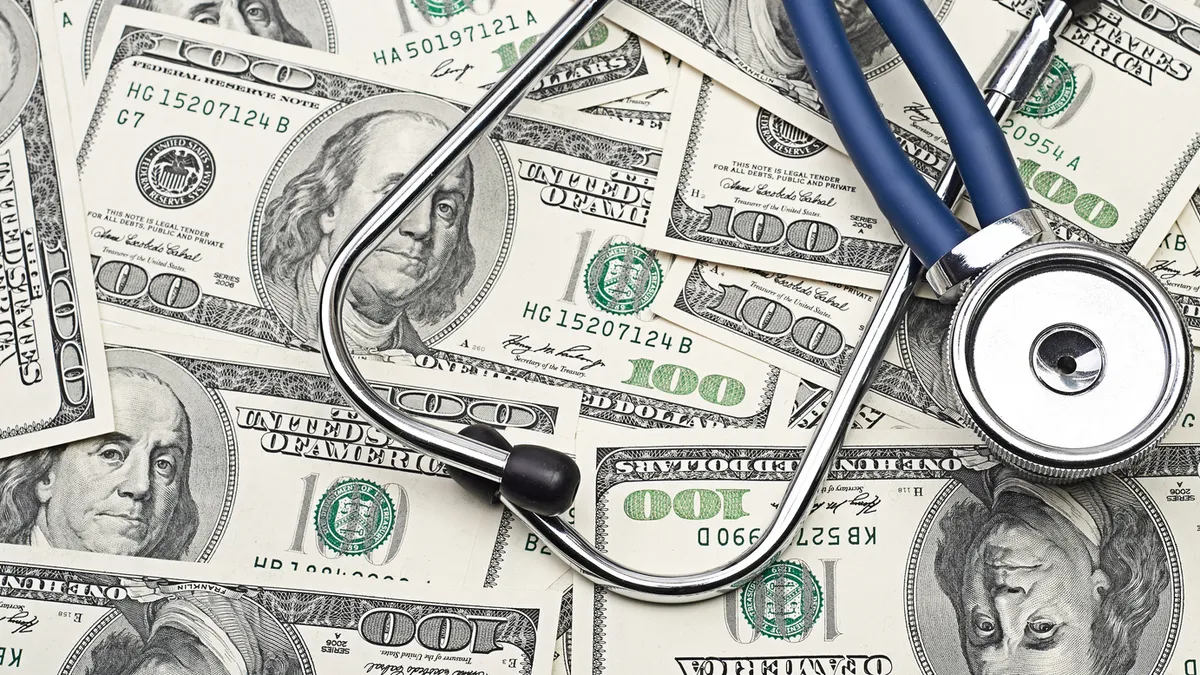Dive Brief:
- Employer medical costs are projected to rise 6.5% in 2022, according to PwC's annual report published Wednesday. That's slightly lower than the medical cost trend in 2021 and slightly higher than in 2016 through 2020.
- A "COVID-19 hangover" leading to increased use of medical services and potentially higher acuity patients, along with digital investments, are key drivers of the expected spending growth.
- A primary spending deflator is a greater reliance on lower-cost sites of care including virtual visits and retail clinics. Some emergency department visits — especially lower-acuity ones — may never return after the pandemic, according to the report.
Dive Insight:
Pandemic uncertainties led the consultancy to project this year's medical cost trend to rise anywhere between 4% and 10%, with it ultimately landing around 7%. Next year it's expected to rise 6.5%, and almost all of the driving factors can be attributed to fallout from the pandemic.
PwC's Health Research Institute interviewed health benefits experts and health plan actuaries whose companies cover nearly 90 million employer-sponsored large group members from February through May of 2021.
Here are some of the profound shifts the healthcare industry experienced during the pandemic that respondents expect will impact future spending:
Inflators:
- A "COVID-19 hangover" will drive increased utilization: Utilization and spending are expected to rise in 2022 as patients who deferred care throughout the pandemic return to medical settings. During the first six months of the pandemic, people with employer-based insurance most commonly deferred their annual preventive visits, and they were also likely to report delaying routine visits for chronic illnesses and laboratory tests or screenings. As such, care deferred during the pandemic that comes back in 2022 may be higher acuity and cost than it would have been in 2020. At the same time, the cost to test, treat and vaccinate people against COVID-19 will continue, and mental health, substance abuse and population health issues all worsened during the pandemic, according to the report.
- Preparing for the next pandemic: Providers experienced supply shortages and other logistical challenges they're working to repair before future emergencies, in turn boosting their spending. Some of those investments include new forecasting tools, improvements to their supply chains, increased wages for some staff, stockpiling personal protective equipment and infrastructure changes.
- Digital investments increase utilization: The widespread adoption of telehealth and virtual care models during the pandemic ultimately broadened patients' access to care. It also gave way to more digital tools and analytics capabilities providers can use to enhance their relationships with patients, thus boosting utilization.
Deflators:
- Lower-cost sites of care: Early shutdowns and virus fears left consumers wary of traditional medical settings, making emergency departments truly a last resort. Overall emergency department volumes decreased by 42% between March and April of 2020, and at the beginning of 2021 were still 25% below pre-pandemic levels, according to data from the Centers for Disease Control and Prevention. As a result, patients embraced virtual care, retail clinics and other alternative care sites. Non-emergent visits to the emergency department, or those not resulting in an MRI, CT scan, surgery or hospitalization are common and costly. PwC estimates a 10% decrease in those visits could save employers nearly $900 million a year.
- More healthcare for less: Health systems can reduce costs with new ways of operating — for instance using remote work models, especially for administrative staff. They can also increase efficiency, reduce costs and boost revenue through process automation and cloud technology. In PwC’s 2021 survey, 31% of provider executives said that adopting automation and artificial intelligence for tasks previously performed by employees is a top priority.












